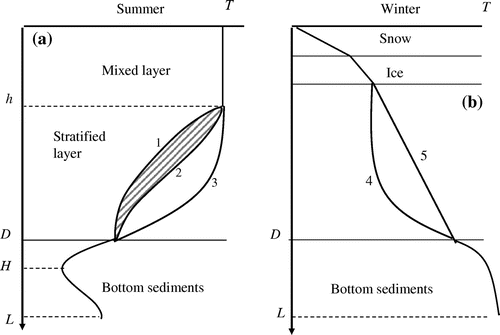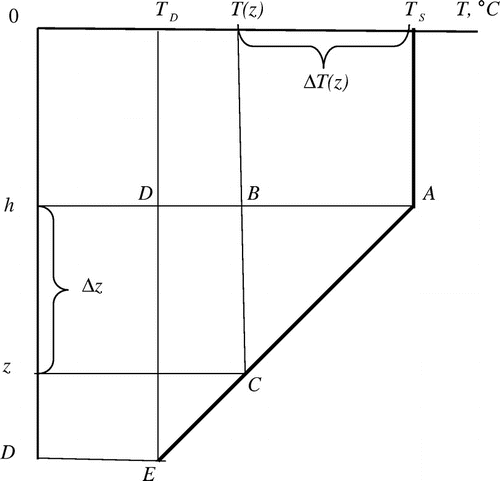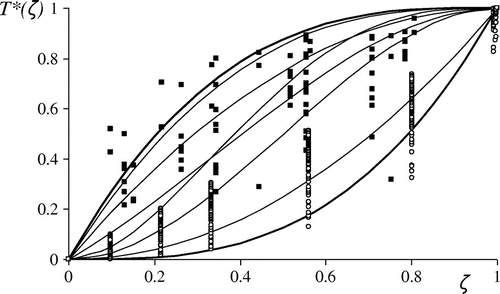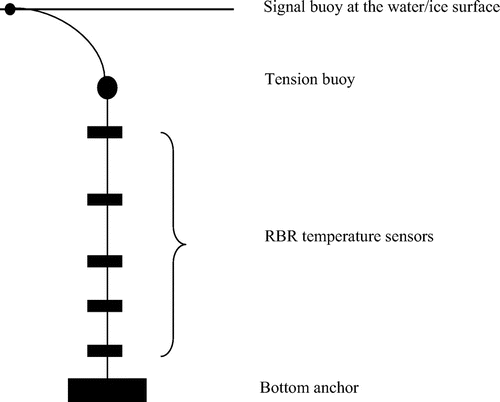Figures & data
Fig. 1. The scheme of the vertical temperature distribution in the system ‘snow – ice – water – bottom sediments’ realized in the model FLake: (a) open water case; (b) ice-covered period.

Table 1. Parameterizations suggested by different authors to describe the vertical distribution of temperature in water basins.
Fig. 2. The scheme of linear temperature profile (Table of symbols in Fig. are the same as those in Fig. ), T(z) is temperature at depth z, A, B, C, D, E are the vertices of a right triangles.

Fig. 4. Relationship between different parameterizations. Here empty circles mark ‘winter’ data, black squares stand for data, obtained during the open water period; upper solid line coincides with parameterization (16) at A = 3 and B = 0, the lower solid line coincides a new parameterization (16) at A = 0 and B = 3. Intermediate thin lines correspond to parameterizations (8)–(13).


